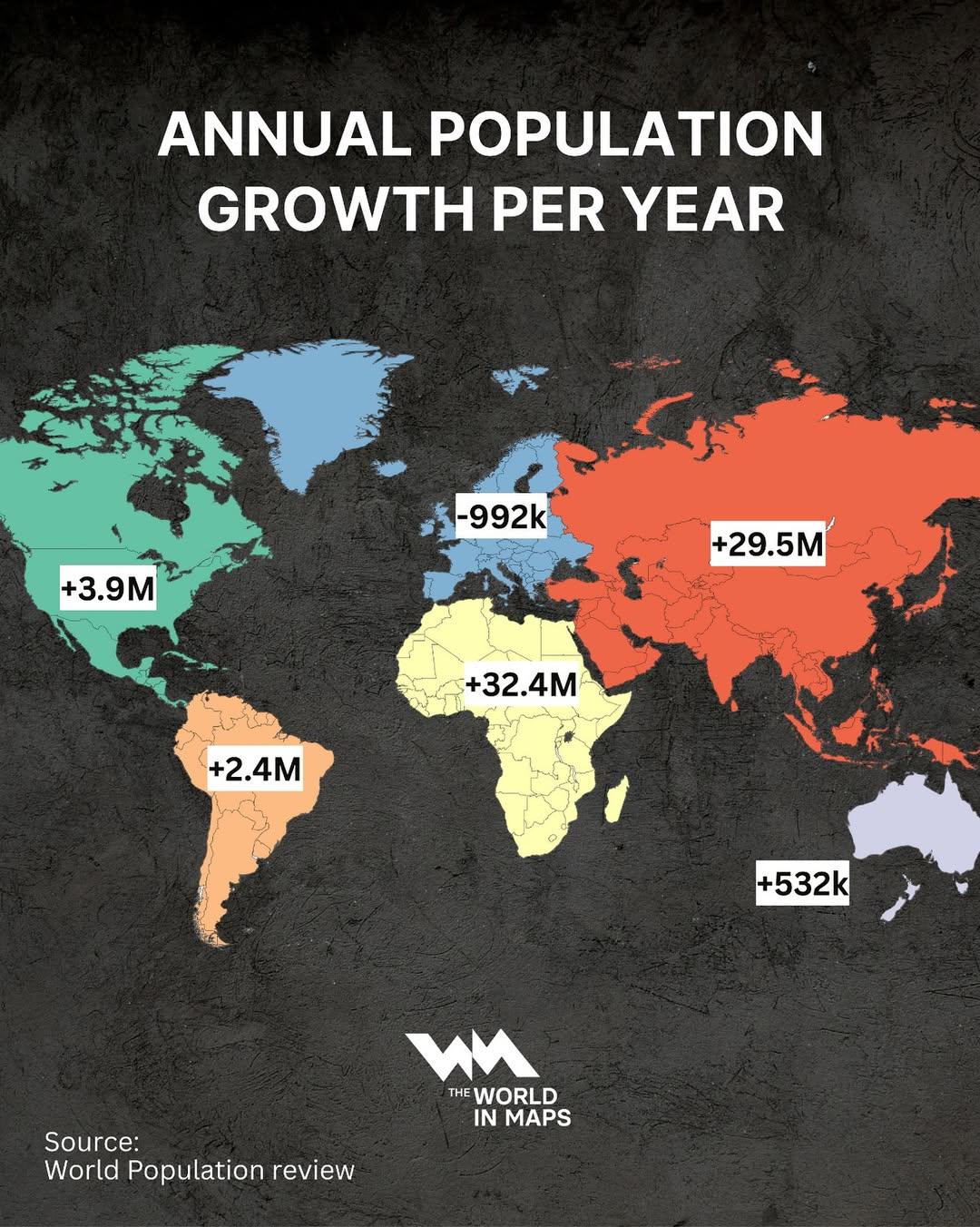Annual Population Growth by Continent Map


Alex Cartwright
Senior Cartographer & GIS Specialist
Alex Cartwright is a renowned cartographer and geographic information systems specialist with over 15 years of experience in spatial analysis and data...
Geographic Analysis
What This Map Shows
The "Annual Population Growth by Continent Map" visually represents the trends in population increase across different continents over a specified period. This map highlights how each continent's population dynamics are evolving, showcasing which areas are experiencing rapid growth and which are stabilizing or declining. Understanding these trends is crucial for grasping global demographic changes and their implications on economic, social, and environmental factors.
Deep Dive into Population Growth
Population growth is a fundamental aspect of human geography, reflecting the balance between births, deaths, and migration. It’s fascinating to note that as of recent years, the global population has surpassed 8 billion, with projections indicating further increases in the coming decades. Population growth can vary significantly by region due to a multitude of factors, including economic development, healthcare access, education, and cultural norms.
In general, developing nations tend to exhibit higher growth rates compared to developed nations. For instance, regions in Sub-Saharan Africa are witnessing some of the highest annual growth rates globally, often exceeding 2% per year. Countries like Niger and Angola are at the forefront of this trend, where young populations and high fertility rates contribute to rapid demographic expansion. In contrast, many European nations, such as Germany and Italy, are facing stagnation or even decline, with growth rates hovering around zero or negative due to aging populations and lower birth rates.
Interestingly, the map also illustrates how urbanization plays a significant role in population growth. Urban areas tend to attract people from rural regions seeking better economic opportunities. Cities like Lagos, Nigeria, and Dhaka, Bangladesh, are expanding rapidly as they become economic hubs, which in turn contributes to their remarkable population increases. The urban population is expected to continue growing, with forecasts suggesting that by 2050, nearly 68% of the world’s population will live in urban areas.
Moreover, migration is another critical factor affecting population growth patterns. Political instability, climate change, and economic opportunities drive people to migrate, influencing the demographic profiles of various regions. For instance, countries like Canada and Australia actively encourage immigration to bolster their workforce and sustain economic growth, leading to more dynamic population increases in these nations.
Regional Analysis
When we analyze the map by continent, the disparities become even more pronounced. Africa, as mentioned, shows remarkable growth, largely fueled by high fertility rates. The map highlights countries like Uganda and Ethiopia, which are projected to see significant increases in their populations, impacting resources, infrastructure, and social services.
In Asia, we see varied growth rates. South Asia, particularly India and Bangladesh, continues to grow rapidly, although at a slowing pace as socioeconomic factors begin to influence family planning. Conversely, Japan faces a unique challenge with a declining population and an aging demographic, which presents challenges for its economy and social systems.
North America presents a mixed picture. The United States experiences modest growth primarily driven by immigration, while Mexico shows a declining growth rate as fertility rates drop. Interestingly, while Europe generally trends towards stagnation, pockets of growth can be found in Eastern Europe due to migration patterns and labor demands.
Australia and Oceania also exhibit growth driven largely by immigration, which is essential for sustaining their economies. However, challenges such as climate change threaten to alter these dynamics in the future, particularly in Pacific island nations where rising sea levels pose existential threats.
Significance and Impact
Understanding annual population growth is crucial for various reasons. It influences economic policies, urban planning, healthcare systems, and educational needs. For instance, as countries with high growth rates struggle to provide adequate services, they may face increased poverty levels and social unrest. Conversely, nations with declining populations must adapt to shrinking workforces and economic challenges, potentially leading to innovation in automation and immigration policies.
As we look toward the future, the implications of these trends become even more significant. The UN projects that by 2050, the global population could reach approximately 9.7 billion. This growth will not be uniform; rather, it will be concentrated in certain regions, particularly in Africa and parts of Asia. Thus, countries will need to strategize on sustainable development practices to accommodate these changes while ensuring that resources are used efficiently.
In conclusion, the "Annual Population Growth by Continent Map" serves as a vital tool for understanding the complex dynamics shaping our world. By analyzing these trends, policymakers, researchers, and citizens alike can better prepare for the future and work towards a sustainable and equitable global society.
Visualization Details
- Published
- October 12, 2025
- Views
- 2
Comments
Loading comments...